
CHASING THE INDRI
Journey To Beauty & Chaos In Paradise
Islands
Mauritius
I
:
Fishing
Villages
,
Sugar
Ocean
and
Ganges
of the Isle
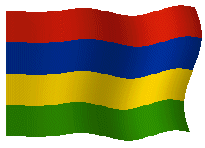
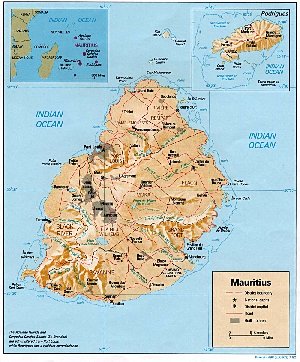
July 2003
Tan Wee Cheng, Singapore
Mauritius
I
:
Fishing
Villages
,
Sugar
Ocean
and
Ganges
of the Isle
Enough
of work, work, work – and I got onto a rented car with a Dutch traveler I
got to know on the Lonely Planet bulletin board while discussing about
Madagascar
. We
hit it off right away after meeting for drinks on a Friday night – two nomads
bumping into each other in the middle of nowhere, and we rolled off place names
like Burkina Faso, Mogadishu, Transdniestria and Ulaanbaatar as though they were
neighbourhood lanes - and he invited to join him in his rented car to explore
the south and southeast of this country.
On
Sat morning, Arian picked me up in
Port Louis
and we drove to the quiet fishing town of
Mahébourg
. This is the oldest political centre in the
country, near where the Dutch first landed in 1598, and within a few decades
they had eaten all the dodo's, a slow large and fat flightless bird with a
strange curving beak truly unique to this island, destroyed all the forests and
planted sugar cane all over. We strolled along the fading streets of this
town of wooden houses under the shadow of coconut and palm trees, and had coffee
and a no-frills eggs and butter cake in a small Indian shop. Mahébourg
is simple and thoroughly sleepy - apart from a Chinese takeaway shop and a
Chinese casino half-constructed, it is anything but cosmopolitan - in fact, with
all the flowing exuberance of the Indian saris and the aromatic smell of incense
from smallish Hindu shrines, this place looks like a provincial Indian village,
with English and occasionally French signboards.
It
was also here in the
Vieux
Grand
Port
(
Great
Old
Port
), under the soaring heights of the
Lion
Mountain
, that the French Navy scored their only naval
victory against the British in the Napoleonic Wars, the Battle of Mahébourg,
which was inscribed on the marble walls of the Triumphant Arch in
Paris
. Now,
only the gentle sails of fishing boats break the silence of this bay of small
islets. We drove on the
coastal road, past rows of huge casuarinas – where you can almost imagine
Bollywood musicals been enacted - and endless acres of sugar cane plantations.
We past small fishing villages along the coastal fringes of the
lion-headed Lion Mountain, with name such as Ville Noire, Riviere des Creoles,
Vieux Grand Port, Boix des Amourettes and Providence.
We
bashed through the narrow, sometimes muddy tracks of deep sugar plantations,
testing the suspension limits of our pathetic little Peugeot.
Up and down small hills and we found ourselves in a ylang ylang estate.
The ylang ylang is a leafy plant whose strong, aromatic extracts are a
critical foundation of perfume and fragrances.
In the shaded restaurant of the estate overlooking a green valley of
sugar cane and ylang ylang, we had Creole Chicken and Prawn for lunch.
The proprietors, unfortunately, had run out of venison, the specialty of
these parts. Deers were first
introduced by the French governors anxious to bring to this island the fine
traditions of hunting at Royal Court of Versailles.
The dodo were long dead by then and introduced species like goats, dogs,
cats and cows were rapidly transforming the eco-environment of this island.
Onwards
to Domaine du Chasseur, an even more distinguished estate once ruled by the
French sugar barons. Here one can
still go for boar and deer hunting, feasting in venison cooked in chasseur aka
fresh deer blood, or jungle walking while living in elaborate lodges built by
entrepreneurial descendants of the sugar kings who realized that they could more
money from tourism than good old sugar. A
drive around the dirt tracks and then a thirty minutes’ climb up a hill with
beautiful palm-trees ravaged by the strange but equally pretty nests of weaving
birds such that they looked like jesters’ hats.
On the top of the hill was the estate bar, with an incredibly panoramic
view of the hills and deep sugar cane valleys of the eastern part of this
island. This is the place to bring someone
special and watch magnificent sunsets over the
Indian Ocean
.
On
Sunday, we sped southwards through deep sugar cane plantations.
We dropped by an old French sugar baron’s pretty palatial Creole
mansion. It’s Sunday, day of
rest, when the baron’s family had gone to church.
Outside the iron gates of fleur-de-lips grills, we could almost imagine
the baron having a mid morning tryst with his pretty black slave girl from
Madagascar
, with the loud passionate moaning in subtropical
heat. As usual, when her dress
became too large to fit, the baroness would send the girl to a remote corner of
the estate, a place full of girls of a similar fate, with their mixed blood
children, forgotten but forerunners of a new race, the Creoles of the paradise
isles of Indian Ocean, the by-products of global cultural exchange and trading
servitude. Of course, the baroness
wasn’t happy but a new tailored evening gown delivered on the latest boat from
London
, and a diamond ring from
Antwerp
would help.
So, life went on in this timeless, isolated isle at the far southern end
of the
Indian Ocean
.
The
Indian Ocean… huge waves beat the wild rugged cliffs – including one named
in honour of black magic - on the southern coast of this island.
Families picnicked on viewpoints while lovers hugged each other at
quieter pathways along the precarious cliff sides.
Brave fishermen trying their luck on boulders barely meters from the
giant waves. Nothing lies between
here and
Antarctica
. Can
you hear the cry of penguins beyond the great ocean?
We
tried looking for the
Rochester
Falls
but got lost in an enormous sugar cane plantation
instead. (Perhaps we were near The Thames, with
Dover
nearby, and
The Hague
should be nearby, just across the drain.)
We drove along the coast, passing dilapidated villages and quaint towns
where shops are sometimes known simply as The General Store.
We past Hindu temples, a Muslim funeral, Catholic churches, secret coves
of white sand and rows of coconut trees leading to paradise.
Yes, and a quiet Muslim town named Surinam (- oh, where is the Guyana
border?), boasts a loud Hindi video shop, a Patisserie Iran with nice Dutch
cakes, and where we had wonderful fried rice in a cafe which served nothing but
fried rice. Satisfied, we turned
inland to the greenish-black mountains of the interior.
Land
of
Coloured Earth
– that’s the first tourist trap of the day, a
forest clearing with soil of shades of red, brown and orange.
I bet that’s what you would get if you excavate
Trafalgar Square
with a caterpillar.
More worthy was the
Chamarel
Falls
nearby, the tallest in this country.
The flat central plateau plunged 100 meters here, a spectacular sight in
that sea of endless greenery.
Heading
further inland, we entered the
Black River
Gorges
National Park
, a well forested area with panoramic views of
misty mountains, deep river valleys and the bright blue ocean at the very
horizon. The park was full of
visitors in their convoys of cars – urbanites looking for a weekend of family
fun not so much admiring the natural scenery, but more participating in the
national sport – plucking the reddish
China
guavas, like Russians going for mushroom picks.
I don’t know which I disliked more – excited locals destroying their
own nature plucking the fruits, or partying with loud Hindi music in nature’s
gift to this island?
We
drove towards the national motorway and enjoyed sunset at a sacred Hindu lake
– the Indians believe that Shiva was cruising around in heavens with River
Ganges on his head, when he sprayed a few water droplets of the holy river onto
this island by mistake, thus creating a crater lake.
The
Ganges
protested the loss of such holy water but Shiva
assured that in years to come, devotees of the river will pay homage to the gods
from this lake, faraway it might be from Mother India.
Indeed, the Indians here have built a temple on the banks of this tiny
lake, which they believed to be the equivalent of the
Holy
River
, worship their gods and protect the sacred fish
here. As sun set over this strange
temple next to a strange lake on a strange island, we wondered about peace and
spiritual harmony in this increasingly chaotic world where the large fish
swallowed the small ones.
And
with that, we drove towards
Port Louis
. Another
day on this beautiful island in the middle of nowhere.
Wee
Cheng
Port Louis
,
Mauritius
 Mauritius II: Globalization, Life And Death
In Land Of The Dodo
Mauritius II: Globalization, Life And Death
In Land Of The Dodo
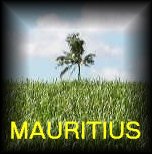

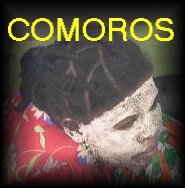
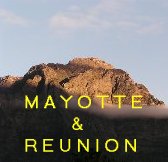
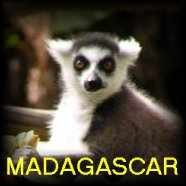
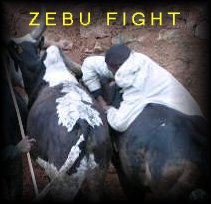
Caveat :
The tales and opinions expressed on this site are
the author’s and by their very nature, personal and opinionated.
You may not agree with them and you are welcomed to voice them by emailing
to the author. However, if the intention is to pick
a fight, such efforts should be directed to soc.culture newsgroups. The
author will not entertain anyone who furl insults and vulgarities. The
names of individuals mentioned in this site have been changed to maintain
their privacy.
 Send
your comments to Tan Wee Cheng, Singapore
Send
your comments to Tan Wee Cheng, Singapore
 Back to Homepage of CHASING THE INDRI
Back to Homepage of CHASING THE INDRI
 Back to the Main Homepage of Weecheng.com
Back to the Main Homepage of Weecheng.com


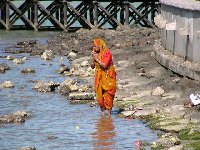
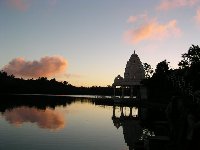
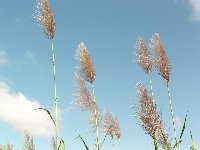
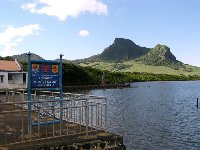
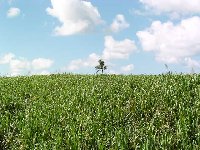
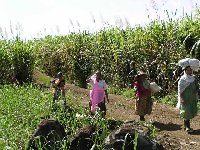
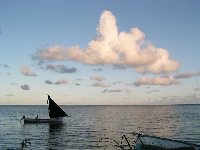
![]() Mauritius II: Globalization, Life And Death
In Land Of The Dodo
Mauritius II: Globalization, Life And Death
In Land Of The Dodo![]() Send
your comments to Tan Wee Cheng, Singapore
Send
your comments to Tan Wee Cheng, Singapore![]() Back to Homepage of CHASING THE INDRI
Back to Homepage of CHASING THE INDRI
![]() Back to the Main Homepage of Weecheng.com
Back to the Main Homepage of Weecheng.com